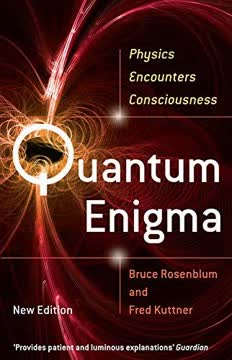Key Takeaways
1. The Quantum World Defies Our Deepest Intuitions
Quantum theory tells us that physical reality is created by observation, and it has “spooky actions” instantaneously infl uencing events far from each other–without any physical force involved.
A stunning success. Quantum mechanics is the most accurate and battle-tested theory in all of science, with not a single prediction ever proven wrong. It underpins every natural science, from chemistry to cosmology, and is the foundation for much of modern technology. Yet, its implications are profoundly counter-intuitive, challenging our fundamental understanding of reality.
Beyond common sense. Unlike classical physics, which describes a predictable, objective world, quantum mechanics reveals a universe where objects can exist in multiple states simultaneously (superposition) and influence each other instantly across vast distances (entanglement). This inherent weirdness, often called the "quantum enigma" or "measurement problem," suggests that reality itself might depend on observation.
The enduring mystery. Despite its unparalleled success in predicting experimental outcomes, the deeper meaning of quantum mechanics remains hotly debated among physicists. The theory forces us to confront questions about existence, causality, and the role of the observer that extend far beyond traditional scientific inquiry, hinting at a reality stranger than we can imagine.
2. Our Newtonian Worldview Is Fundamentally Flawed
Nature and Nature’s laws lay hid in night: / God said, Let Newton be! And all was light.
The classical foundation. Isaac Newton's universal laws of motion and gravity, developed in the 17th century, established a deterministic, mechanistic worldview that shaped Western thought for centuries. This "clockwork universe" implied that if one knew the position and velocity of every particle, the entire future (and past) of the universe could, in principle, be predicted.
Core Newtonian assumptions:
- Determinism: The future is entirely predictable from the present state.
- Physical Reality: Objects possess definite properties independent of observation.
- Separability: Objects interact only through physical forces, not instantaneous "spooky actions."
- Reductionism: Complex systems can be understood by breaking them down into simpler parts.
An excellent approximation. While Newtonian physics remains an excellent approximation for macroscopic objects, it fundamentally breaks down at the atomic scale. The quantum revolution revealed that this intuitively reasonable classical worldview is incomplete and, at its core, flawed, setting the stage for a profound re-evaluation of reality.
3. Observation Creates Reality: The Core Quantum Enigma
Observations not only disturb what is to be measured, they produce it.
The two-slit paradox. The archetypal quantum experiment, the two-slit experiment (or its box-pair analogy), starkly displays the quantum enigma. When individual particles (like atoms or photons) are sent through two slits, they create an interference pattern, implying each particle passed through both slits as a spread-out wave. However, if one attempts to detect which slit the particle passed through, the interference pattern disappears, and the particle is found to have passed through only one slit.
A choice of realities. This means the experimenter's choice of measurement (whether to observe "which path" or "interference") seems to determine the prior reality of the particle. Before observation, the particle exists in a "superposition" of possibilities (e.g., in both boxes simultaneously). Upon observation, this superposition "collapses" into a single, definite reality.
History is mutable. Even more counter-intuitive, quantum theory implies that observation can create not just present reality, but also its relevant past history. A particle's path, for instance, is not fixed until it is observed, and that observation retroactively determines the path it "took." This challenges the notion of an unchangeable past, suggesting a "strange inversion of the normal order of time."
4. "Spooky Actions" Are Real: The Universal Connectedness
Is it not good to know what follows from what, even if it is not necessary FAPP?
Einstein's challenge. Albert Einstein, along with Podolsky and Rosen (EPR), argued that quantum mechanics was incomplete because it didn't account for "elements of physical reality" that could be known without observation. They highlighted "spooky action at a distance" (entanglement), where observing one particle instantly influences its distant twin, without any physical force. Einstein found this unacceptable, believing in a world with both objective reality and separability.
Bell's groundbreaking theorem. John Bell, inspired by EPR, devised a mathematical theorem that provided an experimentally testable prediction (Bell's inequality). This inequality had to hold true if a world possessed both objective reality (particles have definite properties before observation) and separability (no faster-than-light influences). Quantum theory, however, predicted a violation of this inequality.
Experimental confirmation. Decades later, experiments by Clauser and Aspect, using entangled photons, definitively showed that Bell's inequality is violated in the real world, exactly as quantum theory predicted. This means our universe cannot simultaneously possess both objective reality and separability. The "spooky actions" Einstein derided are real, demonstrating a profound, instantaneous connectedness across the universe, even if no information can be transmitted faster than light.
5. Copenhagen: Physics' Pragmatic Way to "Shut Up and Calculate"
There is no quantum world. There is only an abstract quantum description. It is wrong to think that the task of physics is to fi nd out how nature is. Physics concerns what we can say about nature.
The orthodox view. Developed by Niels Bohr and Werner Heisenberg, the Copenhagen interpretation is the standard way working physicists deal with quantum weirdness. It asserts that "observation" (defined as the interaction of a microscopic quantum system with a macroscopic classical measuring device) produces the observed property.
Pillars of Copenhagen:
- Probability Interpretation: The wavefunction describes the probability of finding a particle at a certain place, not its actual location before observation.
- Heisenberg Uncertainty Principle: Any attempt to precisely measure one property (e.g., position) inevitably makes a complementary property (e.g., momentum) uncertain, preventing logical contradictions.
- Complementarity: Microscopic objects have contradictory wave and particle aspects, but only one can be observed at a time, depending on the experimental setup.
For all practical purposes (FAPP). Copenhagen allows physicists to "shut up and calculate" by pragmatically separating the microscopic quantum realm (where reality is observer-created and weird) from the macroscopic classical realm (where things are real and sensible). It argues that since we only interact with the macroscopic world, we don't need to worry about the "non-reality" of the small, effectively sidestepping the philosophical implications.
6. Schrödinger's Cat: The Absurdity of Quantum Theory Applied to the Large
The entire system would [contain] equal parts of living and dead cat.
Reductio ad absurdum. Erwin Schrödinger devised his famous thought experiment to expose what he saw as the absurdity of quantum theory's implications. He imagined a cat in a sealed box with a quantum device that, based on a random atomic decay, would either release poison (killing the cat) or not.
A superposition of states. According to quantum theory, if the atom is in a superposition of decayed and undecayed states, then the entire system – including the Geiger counter, the poison, and the cat – must also be in a superposition. This means, before observation, the cat is simultaneously both alive and dead.
The "collapse" upon observation. Only when an observer opens the box does the cat's superposition collapse into a definite state: either alive or dead. Schrödinger's point was that such a conclusion, where a macroscopic object like a cat exists in a state of simultaneous life and death, is ridiculous and highlights a fundamental flaw in the theory's interpretation.
Practical vs. principled. While physicists argue that a cat cannot remain isolated long enough to be in such a superposition (due to rapid "decoherence" with its environment), Schrödinger's thought experiment remains a powerful challenge to the idea that quantum weirdness is confined to the microscopic realm. It forces us to confront the theory's logical extension to everything, including ourselves.
7. Consciousness: The Unavoidable Encounter at Physics' Frontier
When the province of physical theory was extended to encompass microscopic phenomena through the creation of quantum mechanics, the concept of consciousness came to the fore again: It was not possible to formulate the laws of quantum mechanics in a fully consistent way without reference to the consciousness.
The von Neumann chain. John von Neumann rigorously showed that if quantum mechanics applies universally, the "collapse" of a superposition state cannot be explained by any physical interaction alone. The chain of measurement, from a quantum particle to a detector, to a recording device, to the human eye, and finally to the brain, would all remain in a superposition until the very last step: the conscious observer.
The "hard problem" of consciousness. This quantum "measurement problem" resonates with David Chalmers' "hard problem" of consciousness: how the physical brain generates subjective, inner experience. Both mysteries involve a transition from objective physical processes to subjective experience or definite reality, suggesting a potential deep connection.
Free will and the observer. The quantum enigma arises from the assumption that experimenters have "free will" to choose between experiments that yield contradictory realities. If this free will is not an illusion, then consciousness appears to play an active, non-physical role in shaping physical reality, challenging the traditional scientific view that consciousness is merely an emergent property of brain electrochemistry.
8. Quantum Mechanics Powers One-Third of Our Economy
One-third of our economy depends on products based on it.
Ubiquitous technology. Despite its philosophical complexities, quantum mechanics is not just an abstract theory; it is the bedrock of modern technology and a massive economic driver. Its principles are applied daily by engineers and scientists to design and improve countless devices that shape our lives.
Key quantum technologies:
- Lasers: Used in everything from barcode scanners and DVD players to fiber optic communications, surgery, and industrial cutting. Their operation relies on stimulated emission of photons.
- Transistors: The fundamental building blocks of all modern electronics, from computers to smartphones. Their function depends on the quantum behavior of electrons in semiconductors.
- Charge-Coupled Devices (CCDs): Found in digital cameras and astronomical instruments, converting light into electrical signals with extreme sensitivity, leveraging the photoelectric effect.
- Magnetic Resonance Imaging (MRI): A crucial diagnostic tool in medicine, producing detailed images of body tissues by exploiting the quantum magnetic properties of atomic nuclei.
Future frontiers. The practical applications of quantum mechanics continue to expand rapidly, with ongoing research into "quantum dots" (artificial atoms with tunable quantum properties) and "quantum computers" (which could solve problems intractable for classical computers by leveraging superposition and entanglement). These innovations promise to further revolutionize technology and our understanding of the world.
9. The Quantum Cosmos: A Universe Shaped by Observation
In the beginning there were only probabilities. The universe could only come into existence if someone observed it. It does not matter that the observers turned up several billion years later. The universe exists because we are aware of it.
Cosmic fine-tuning. Modern cosmology, based on general relativity and quantum theory, reveals a universe incredibly "fine-tuned" for life. The fundamental constants and initial conditions of the Big Bang appear to be set with an almost impossibly low probability to allow for the formation of stars, elements, and ultimately, conscious observers.
The anthropic principle. This "cosmic coincidence" has led to the "anthropic principle," which suggests that the universe's properties are as they are because, if they were different, we wouldn't be here to observe them. While some dismiss this as a tautology, others propose a "strong anthropic principle" where the existence of observers is somehow necessary for the universe to exist.
Wheeler's participatory universe. Quantum cosmologists like John Wheeler have provocatively suggested that the universe itself might be a "participatory universe," where observation plays a role in bringing reality into existence, even at the scale of the Big Bang. His famous sketch of an eye looking back at the Big Bang asks if "looking back 'now' gives reality to what happened 'then'."
A profound connection. While such ideas remain highly speculative and controversial, they highlight the profound questions that arise when quantum mechanics is applied to the universe as a whole. The quantum enigma, initially observed in the smallest particles, thus extends to the grandest scales, hinting at an inseparable link between consciousness and the very fabric of reality.
Last updated:
Review Summary
Quantum Enigma receives high praise for its accessible explanation of quantum mechanics to non-experts. Readers appreciate its clear analogies, historical context, and exploration of philosophical implications. Many find it mind-boggling yet comprehensible, praising its approach to complex topics like consciousness and reality. Some consider it a great introduction to quantum physics, while others note its potential to spark new thinking. A few readers mention its humbling effect and the need for careful digestion of the material.
Similar Books
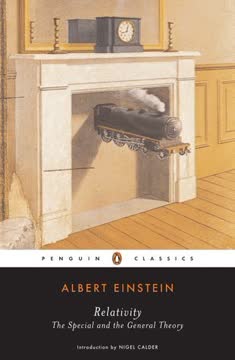

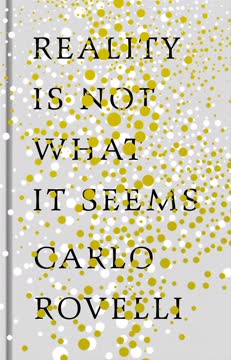

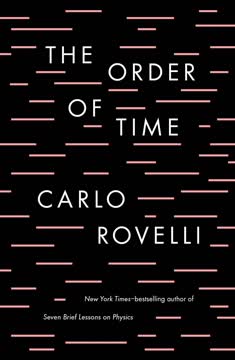
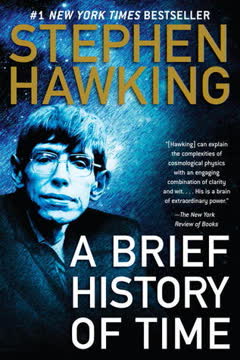
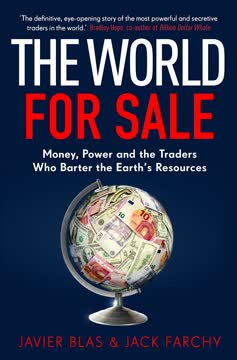
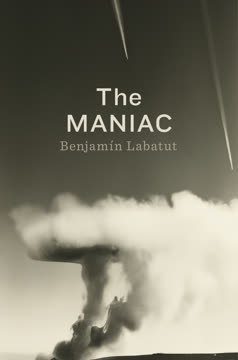
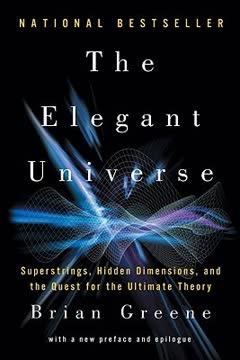
Download PDF
Download EPUB
.epub digital book format is ideal for reading ebooks on phones, tablets, and e-readers.
